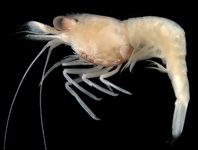Abstract
Two new species of the new genus Pseudorogneda of Polycystididae were discovered in a brackish environment from Southern China. Pseudorogneda sinensis n. gen. n. sp., is distinguished by a semicircular double-walled prostate stylet type II that tapers in diameter from proximal to distal with a proximal-to-distal fold, and an inner wall with a funnel-shaped base originating at the midpoint of the outer wall; its flattened tubular prostate stylet type IV exhibits a horn-like base and a proximal-to-distal folded structure on its wall. For Pseudorogneda shenda n. gen. n. sp., its crescent-shaped prostate stylet type II is double-walled and the inner wall has a funnel-shaped base that starts at the proximal 2/3 position of the outer stylet and is fused with the outer stylet to form a sharp distal end; its tubular and slightly-curved prostate stylet type IV exhibits a slit and a distal fold. Phylogenetic analysis of 18S rDNA and 28S rDNA sequences shows that the two novel species are clustered to form an independent clade from other genera, which is consistent with morphological comparison in the establishment of two new species in a new genus.
References
Artois, T.J. & Schockaert, E.R. (1999) Interstitial fauna of the Galapagos: Porrocystidinae (Platyhelminthes Polycystididae). Tropical Zoology, 12, 309–324.
https://doi.org/10.1080/03946975.1999.10539397
Artois, T.J. & Schockaert, E.R. (2003) Primary homology assessment in the male atrial system of the Polycystididae (Platyhelminthes: Eukalyptorhynchia). Zoologischer Anzeiger, 242, 179–190.
https://doi.org/10.1078/0044-5231-00095
Artois, T.J. & Schockaert, E.R. (2005) Primary homology assessment of structures in the female atrial system among species of the Polycystididae (Rhabditophora, Eukalyptorhynchia). Invertebrate Biology, 124 (2), 109–118.
https://doi.org/10.1111/j.1744-7410.2005.00013.x
Artois, T.J. (2008) Revision of Rogneda Uljanin, 1870 (Rhabditophora, Eukalyptorhynchia, Polycystididae) with the description of seven new species. Zoological Journal of the Linnean Society, 153, 1–28.
https://doi.org/10.1111/j.1096-3642.2008.00384.x
Brunet, M. (1979) Turbellariés Calyptorhynques du golfe de Marseille. Rev Biol Ecol Méditerr, 6, 101–120.
Curini-Galletti, M. & Puccinelli, I. (1998) The Gyratrix hermaphroditus species complex (Kalyptorhynchia: Polycystididae) in marine habitats of eastern Australia. Hydrobiologia, 383 (1–3), 287–298.
https://doi.org/10.1023/A:1003456102035
Diez, Y.L., Hernández, C.S., Reygel, P., Roosen, P. & Artois, T.J. (2018) First record of Polycystididae (Platyhelminthes, Kalyptorhynchia) from Cuba, with the description of a new genus and five new species, and remarks and the description of one new species from Panama. Zootaxa, 4514 (1), 107–125.
http://dx.doi.org/10.11646/zootaxa.4514.1.9
Evdonin, L. A. (1977) Turbellaria Kalyptorhynchia in the fauna of USSR and adjacent areas. Fauna USSR, 115, 1–400.
Hu, X.Z., Chen, Y.S., Zhong, L.H., Xie, Y.H., Feng, W.T., Zhang, Y. & Wang, A.T. (2019) A new species and new record of Rhabdocoela (Polycystididae and Trigonostomidae) from China. Zootaxa, 4695(4), 351–366.
https://doi.org/10.11646/zootaxa.4695.4.3
Karling, T.G. (1956) Morphologisch-histologische Untersuchungen an den männlichen Atrialorganen der Kalyptorhynchia (Turbellaria). Arkiv för Zoologi, 9, 187–277.
Karling, T.G. (1964) Über einige neue und ungenügend bekannte Turbellaria Eukalyptorhynchia. Zoologischer Anzeiger, 172, 159–183.
Karling, T.G. & Schockaert, E.R. (1977) Anatomy and systematics of some Polycystididae (Turbellaria, Kalyptorhynchia) from the Pacific and S. Atlantic. Zoologica Scripta, 6 (1), 5–19.
https://doi.org/10.1111/j.1463-6409.1977.tb00755.x
Katoh, K., Rozewicki, J. & Yamada, K.D. (2017) Mafft online service: multiple sequence alignment, interactive sequence choice and visualization. Briefings in Bioinformatics, 20 (4), 1160–1166.
https://doi.org/10.1093/bib/bbx108
Kuraku, S., Zmasek, C.M., Nishimura, O. & Katoh, K. (2013) aLeaves facilitates on-demand exploration of metazoan gene family trees on mafft sequence alignment server with enhanced interactivity. Nucleic Acids Research, 41 (Web Server issue), W22–W28.
https://doi.org/10.1093/nar/gkt389
Lin, Y.T., Feng, W.T., Zhuang, J.Y., Zhang, Y. & Wang, A.T. (2017) Two new species of Kalyptorhynchia (Koinocystididae and Gnathorhynchidae) from China. Zootaxa, 4337 (4), 573–583.
https://doi.org/10.11646/zootaxa.4337.4.8
Lin, Y.T., Reygel, P., Feng, W.T., Chen, J.J., Tessens, B., Van Steenkiste, N.W.L., Shockaert, E.R., Artois, T.J. & Wang, A.T. (2019) Four new species of the genus Paraustrorhynchus (Rhabdocoela: Kalyptorhynchia: Polycystididae). Zootaxa, 4550 (3), 357–373.
https://doi.org/10.11646/zootaxa.4550.3.4
Littlewood, D.T. J., Curini-Galletti, M. & Herniou, E.A. (2000) The interrelationships of Proseriata (Platyhelminthes: Seriata) tested with molecules and morphology. Molecular Phylogenetics & Evolution, 16 (3), 449–466.
https://doi.org/10.1006/mpev.2000.0802
Nguyen, L.T., Schmidt, H.A., von Haeseler, A. & Minh, B.Q. (2015) IQ-TREE: A Fast and Effective Stochastic Algorithm for Estimating Maximum-Likelihood Phylogenies. Molecular Biology & Evolution, 32 (1), 268–274.
https://doi.org/10.1093/molbev/msu300
Norén, M. & Jondelius, U. (1999) Phylogeny of the Prolecithophora (Platyhelminthes) inferred from 18S rDNA sequences. Cladistics, 15 (2), 103–112.
https://doi.org/10.1111/j.1096-0031.1999.tb00252.x
Nylander, J.A.A. (2004) MrModeltest. Version 2. Program distributed by the author. Evolutionary Biology Centre, Uppsala University, Uppsala. [software]
Rambaut, A. (2006–2009) Tree Figure Drawing Tool. Version 1.3.1. Institute of Evolutionary Biology, University of Edinburgh, Edinburgh. [software]
Ronquist, F., Teslenko, M., van der Mark, P., Ayres, D.L., Darling, A., Hohna, S., Larget, B., Liu, L., Suchard, M.A. & Huelsenbeck, J.P. (2012) MrBayes 3.2: efficient Bayesian phylogenetic inference and model choice across a large model space. Systematic Biology, 61(3), 539–542.
https://doi.org/10.1093/sysbio/sys029
Talavera, G. & Castresana, J. (2007) Improvement of Phylogenies after Removing Divergent and Ambiguously Aligned Blocks from Protein Sequence Alignments. Systematic Biology, 56(4), 564–577.
https://doi.org/10.1080/10635150701472164
Tessens, B., Janssen, T. & Artois, T.J. (2014) Molecular phylogeny of Kalyptorhynchia (Rhabdocoela, Platyhelminthes) inferred from ribosomal sequence data. Zoologica Scripta, 43 (5), 519–530.
https://doi.org/CNKI:SUN:DWFL.0.2005-04-012
Tu, T.J. (1934) Notes on some Turbellarians from the Tsing Hua Campus. The Science Reports of National Tsing Hua University. Series B Biological and Psychological Science, 1, 191–206.
Wang, A.T. & Li, H. (2005) A new species of the genus Gyratrix from a freshwater pond in Guangdong province, China (Rhabdocoela, Polycystididae). Acta Zootaxonomica Sinica, 30 (4), 721–724. [in Chinese]
https://doi.org/10.1360/jos162021
Willems, W.R., Schockaert, E.R. & Artois, T.J. (2006) Report on the Polycystididae (Rhabdocoela, Kalyptorhynchia) from Australia, with the description of twelve new species and six new genera. Hydrobiologia, 563 (1), 329–355.
https://doi.org/10.1007/s10750-006-0041-3
Zhong, L.H., Hu, X.Z., Lin, Y.T., Feng, W.T., Zhuang, J.Y., Zhang, Y. & Wang, A.T. (2018) A new species and new recorded of Polycystididae (Rhabdocoela: Kalyptorhynchia) from China. Zootaxa, 4446 (1), 39–50.
https://doi.org/10.11646/zootaxa.4446.1.3


